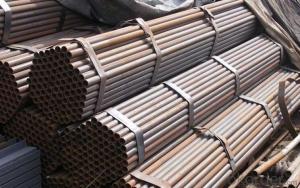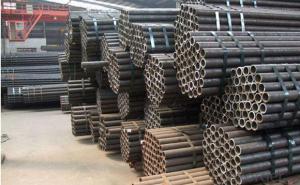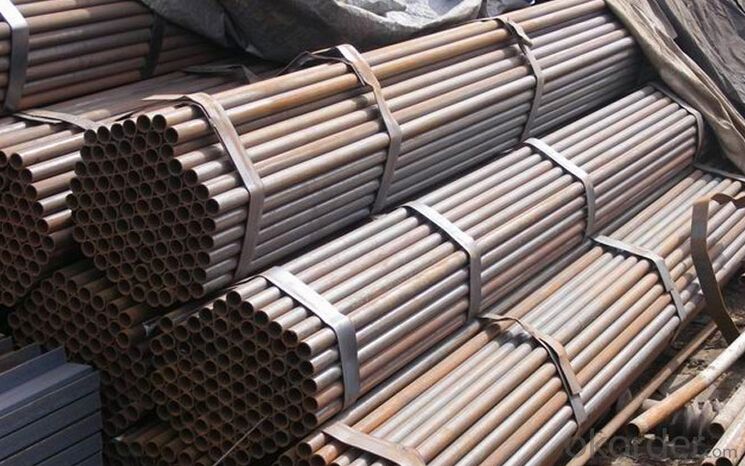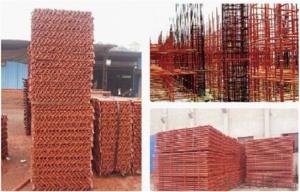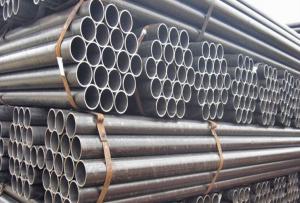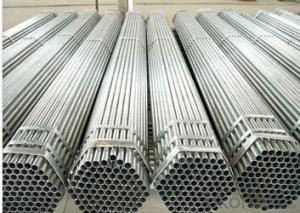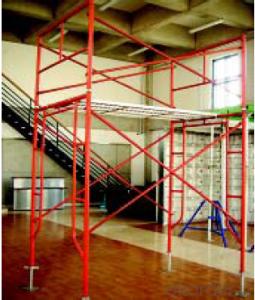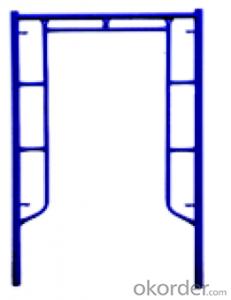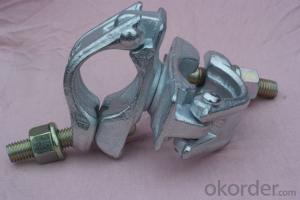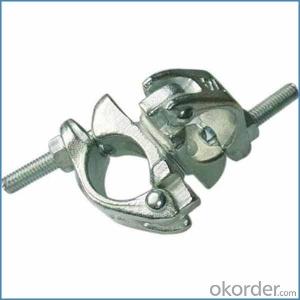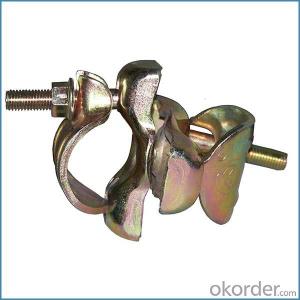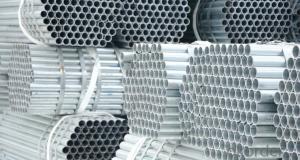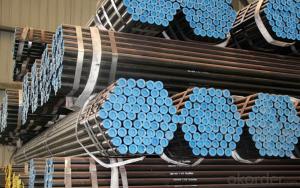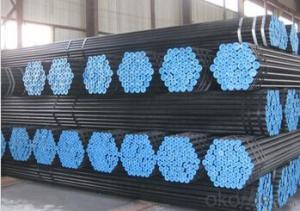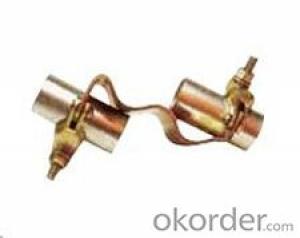STEEL PIPE TUBE SCAFFOLDING
- Loading Port:
- China Main Port
- Payment Terms:
- TT OR LC
- Min Order Qty:
- -
- Supply Capability:
- -
OKorder Service Pledge
OKorder Financial Service
You Might Also Like
Quick Details
| Thickness: | Outer Diameter: | ||||
| Place of Origin: | Secondary Or Not: | Application: | |||
| Technique: | Certification: | Surface Treatment: | |||
| Special Pipe: | Alloy Or Not: | color: | |||
| certificate: | Key word: | Thicknss tolerance: | |||
| Payment: | pipe end: | Packaging Detail: | |||
| Grade: | Standard: |
Packaging & Delivery
| Packaging Detail: | 1) Bundle, 2) In Bulk 3) Bags 4) Clients' Requirements |
| Delivery Detail: | within 10-15 days after receipt deposit or irrevocable LC |
Specifications
black scaffolding steel tube
1. OD: 21.3mm---------219.1mm
Thickness: 1.0mm-------10mm
2. Length: 5.
First: Company introduce
We are Professional manufacturer for GALVANIZED PIPE,ERW SQUARE HOLLOW SECTION,BLACK PIPE.
Founded on May 1st,2005,situated in Xizhaizhuang Town Industrial Estate,Tianjin..Thanks to good quality and a great veriety,our products are very popular among new and old customers and are export to such regions and countries as Southeast Asia and Middle East.
Second: Product Information
Black steel pipe/tubes
1. OD: 20mm-----219mm WT:2.0mm----10mm
2. Tolerance: Thinckness,+/-0.05mm; Length,+/-10mm
3.Material: S235JR
4.Standard: ASTM/BS/GB/DIN
5.Surface: Varnish
6.Moq: 5ton
7. Usage: Greenhouse,Scaffold,highway,bridge
8.Payment:30%T/T advance+70%upon presentig shipping documents.
9. Trade Terms: CFR,CIF,FOB
Third: Size
Stock erw steel pipe
O.D (inch) | W.T.(mm) |
1/2” | 1.4--2.75 |
3/4” | 1.4--2.75 |
1” | 1.4--3.5 |
1-1/4” | 1.4--3.5 |
1-1/2” | 1.4--3.75 |
2” | 1.4--4.0 |
4” | 1.4--5.75 |
5” | 1.4--7.75 |
6” | 1.4--7.75 |
8” | 2.75--11.75 |
- Q: Are steel tube couplers suitable for both residential and commercial scaffolding applications?
- Steel tube couplers can be used for both residential and commercial scaffolding applications. They are extensively utilized in the construction industry because of their strength, durability, and versatility. These couplers are designed to securely connect steel tubes in scaffolding systems, ensuring a stable and dependable structure. Regardless of whether it is for residential or commercial purposes, steel tube couplers are capable of withstanding heavy loads and guaranteeing the safety of workers and materials. Furthermore, they are compatible with various types of scaffolding systems and can be easily assembled and disassembled, making them suitable for different construction projects. In summary, steel tube couplers are a dependable and efficient choice for both residential and commercial scaffolding applications.
- Q: What's a scaffold?
- a metal structure that you build to your desired hieght, then you stand on it and paint or do construction work
- Q: A 3.0 m long steel chain is stretched out along the top level of a horizontal scaffold at a construction site, in such a way that x = 1.6 m of the chain remains on the top level and y = 1.4 m hangs vertically. (See the figure.) At this point, the force on the hanging segment is sufficient to pull the entire chain over the edge. Once the chain is moving, the kinetic friction is so small that it can be neglected. How much work is performed on the chain by the force of gravity as the chain falls from the point where 1.6 m remains on the scaffold to the point where the entire chain has left the scaffold? (Assume that the chain has a linear weight density of 32 N/m.)
- I'd look at this situation this way: The picture of chain lying on scaffold at the start has the center of mass (CM) of hanging part of chain at y/2 = 1.4/2 = 0.7 m from top of scaffold. At the finish, the entire chain is hanging in air with its CM at a distance = (1.6 + 1.4)/2 = 3/2 = 1.5 m from top of scaffold. So the change in CM position during the entire downward movement equals: 1.5 - 0.7 = 0.8 m. In first picture described above, the gravitational force on the hanging chain = (32)(1.4) = 44.8 N. In last picture entire chain hangs vertically off scaffold, gravitational force = chain weight = (32)(3) = 96 N. The average weight of chain pulling downward during the chain's movement = (44.8 + 96)/2 = 70.4 N Work done by the force of gravity on chain = (70.4)(0.8) = 56 J ANS
- Q: How do steel tube couplers perform in areas with high levels of electromagnetic fields?
- Areas with high levels of electromagnetic fields can benefit greatly from the use of steel tube couplers. These couplers have proven to be effective in shielding against electromagnetic interference (EMI) due to the properties of steel as a material. Steel is known for its high conductivity, allowing it to efficiently divert and absorb electromagnetic waves. By doing so, steel tube couplers prevent these waves from interfering with the performance of the couplers. In regions where electromagnetic fields are prominent, such as near power lines or electrical equipment, steel tube couplers act as a formidable barrier. They effectively block electromagnetic waves from penetrating through and causing interference. This shielding effect ensures that the couplers maintain their integrity and reliability, even in challenging electromagnetic environments. Steel tube couplers are widely used across industries such as telecommunications, power transmission, and construction. These industries often encounter high levels of electromagnetic fields, making the use of steel tube couplers essential. These couplers are specifically designed and manufactured to withstand the demanding conditions of these environments. Overall, steel tube couplers are a dependable choice for areas with high levels of electromagnetic fields. Their excellent shielding properties and ability to maintain optimal performance in challenging electromagnetic environments make them a reliable solution for various industries.
- Q: Can steel tube couplers be used for scaffolding structures that need to provide access to remote or difficult-to-reach areas?
- Yes, steel tube couplers can be used for scaffolding structures that need to provide access to remote or difficult-to-reach areas. Steel tube couplers are commonly used in scaffolding systems to connect the tubes and create a stable and secure structure. They are versatile and can be used in various configurations to adapt to different requirements, including accessing remote or difficult-to-reach areas. Steel tube couplers provide a strong and reliable connection between scaffolding tubes, ensuring the stability and safety of the structure. They are designed to withstand heavy loads and offer excellent resistance to corrosion and weather conditions, making them suitable for use in challenging environments. By using steel tube couplers, scaffolding structures can be easily assembled and disassembled, allowing for quick setup and efficient access to remote or difficult-to-reach areas. The couplers provide flexibility in adjusting the height and configuration of the scaffolding to adapt to different terrains and obstacles. Additionally, steel tube couplers are widely available and relatively affordable, making them a cost-effective solution for scaffolding structures. They are also compatible with various other scaffolding components, allowing for customization and versatility in designing the scaffolding system. In conclusion, steel tube couplers are a suitable choice for scaffolding structures that need to provide access to remote or difficult-to-reach areas. They offer strength, stability, and flexibility, making them an excellent option for such applications.
- Q: What are the typical weight limits for steel tube couplers in scaffolding applications?
- The weight limits for steel tube couplers in scaffolding applications can vary depending on the specific type and design of the coupler. However, generally speaking, steel tube couplers used in scaffolding are designed to handle heavy loads and support significant weight. Take, for instance, a standard forged steel sleeve coupler, which is commonly employed in scaffold connections. Typically, it has a maximum load rating of about 3,000 pounds (1,360 kilograms). This means that when properly installed and used with other couplers and scaffolding components, each coupler can support this amount of weight. It is worth noting that weight limits for steel tube couplers are affected by several factors, including the diameter and thickness of the connected tubes, the type of scaffolding system in use, and the overall design and integrity of the entire scaffolding structure. Therefore, it is crucial to adhere to the manufacturer's specifications and guidelines, as well as any relevant local regulations, to ensure the safe and correct utilization of steel tube couplers in scaffolding applications. In any case, it is always wise to consult with a qualified scaffolding engineer or a reputable supplier to determine the specific weight limits and load-bearing capacities of steel tube couplers for your particular scaffolding project.
- Q: How do steel tube couplers ensure proper alignment and connection of scaffolding tubes with different diameters?
- The design and functionality of steel tube couplers guarantee the correct alignment and connection of scaffolding tubes with varying diameters. These couplers have been specifically designed to securely connect two scaffolding tubes of different sizes while ensuring alignment. An important characteristic of steel tube couplers is their adjustable design. Typically, these couplers possess a threaded bolt or collar mechanism that allows for size adjustment to match the diameters of the connected tubes. This adjustable feature ensures a secure fit onto both tubes, regardless of their differing diameters. Furthermore, steel tube couplers often come equipped with internal gripping teeth or ridges. These teeth or ridges are strategically placed inside the coupler to provide a strong grip on the tubes. When the coupler is tightened, these teeth or ridges dig into the surface of the tubes, creating a robust connection that prevents slippage and maintains alignment. Moreover, steel tube couplers are typically constructed using high-quality steel materials renowned for their strength and durability. This construction guarantees that the couplers can withstand the weight and load placed on the scaffolding without compromising the connection or alignment of the tubes. In conclusion, steel tube couplers ensure the proper alignment and connection of scaffolding tubes with varying diameters by utilizing an adjustable design, internal gripping teeth or ridges, and high-quality steel construction. These features work together to create a secure and reliable connection that maintains tube alignment and guarantees the stability and safety of the scaffolding structure.
- Q: Can steel tube couplers be used in scaffolding projects with limited overhead clearance?
- Yes, steel tube couplers can be used in scaffolding projects with limited overhead clearance. Steel tube couplers are commonly used in scaffolding systems to connect and secure steel tubes together. They provide a strong and reliable connection, ensuring the stability and safety of the scaffolding structure. In scaffolding projects with limited overhead clearance, steel tube couplers offer several advantages. Firstly, they are compact and do not require much vertical space, making them suitable for projects where there is limited overhead clearance. Secondly, they can be easily adjusted and secured in tight spaces, allowing for efficient assembly and disassembly of the scaffolding structure. Additionally, steel tube couplers are highly durable and can withstand heavy loads, ensuring the stability and safety of the scaffolding system even in challenging conditions. Their versatility and ease of use make them a popular choice for scaffolding projects with limited overhead clearance.
- Q: Can steel tube couplers be used in scaffolding applications with curved or irregular shapes?
- Scaffolding applications with curved or irregular shapes can utilize steel tube couplers, but it is important to take additional measures and seek expertise to guarantee proper installation and stability. The primary function of steel tube couplers in scaffolding is to connect and secure the tubes together, forming a stable structure. They are commonly used in straight, vertical, or horizontal configurations, but they can also be employed for scaffolding structures with curved or irregular shapes. When dealing with curved or irregular shapes, it is crucial to consider the specific requirements and limitations of the steel tube couplers being used. The design and specifications of the couplers should be evaluated to ensure they can accommodate the varying angles and shapes of the scaffolding structure. In certain cases, it may be necessary to utilize additional components or specialized couplers to achieve the desired curved or irregular shape. These could include swivel couplers, adjustable couplers, or other connectors that allow for flexibility and adjustment. Moreover, consulting experienced scaffolding professionals or engineers is of utmost importance when designing and constructing scaffolding systems with curved or irregular shapes. They can provide guidance and expertise, analyzing the specific requirements of the project and recommending appropriate couplers and techniques to ensure the stability and safety of the scaffolding structure. Overall, while steel tube couplers can be utilized in scaffolding applications with curved or irregular shapes, it is essential to carefully consider the specific requirements and seek professional advice to guarantee proper installation and structural integrity.
- Q: What are the advantages of using steel tube couplers over other types of scaffolding connectors?
- There are several advantages of using steel tube couplers over other types of scaffolding connectors. 1. Strength and durability: Steel tube couplers are known for their strength and durability. They are capable of withstanding heavy loads, making them a reliable choice for scaffolding structures. They are also resistant to wear and tear, ensuring a longer lifespan compared to other connectors. 2. Versatility: Steel tube couplers are highly versatile and can be used in various scaffolding configurations. They can connect tubes at different angles, allowing for flexibility in designing scaffolding structures. This versatility makes them suitable for a wide range of applications, including construction, maintenance, and repair work. 3. Easy installation: Steel tube couplers are simple to install, reducing the time and effort required to assemble scaffolding. They are designed to be easily attached and tightened onto tubes, providing a secure connection. This ease of installation enhances efficiency and productivity on the job site. 4. Safety: Steel tube couplers provide a secure and stable connection, ensuring the safety of workers on scaffolding structures. They are designed to withstand lateral forces and prevent accidental disconnection, reducing the risk of accidents and injuries. Their strength and reliability give workers peace of mind when working at heights. 5. Cost-effective: Steel tube couplers are cost-effective in the long run. Their durability reduces the need for frequent replacements, saving on maintenance and replacement costs. Additionally, their versatility allows for reuse on multiple projects, further reducing expenses. 6. Compliance with regulations: Steel tube couplers are widely accepted and recognized in the industry. They conform to various safety standards and regulations, ensuring compliance on construction sites. This compliance contributes to a safer working environment and helps avoid potential legal issues. Overall, the advantages of using steel tube couplers over other types of scaffolding connectors include strength, durability, versatility, ease of installation, safety, cost-effectiveness, and compliance with regulations. These benefits make steel tube couplers a preferred choice for scaffolding applications.
Send your message to us
STEEL PIPE TUBE SCAFFOLDING
- Loading Port:
- China Main Port
- Payment Terms:
- TT OR LC
- Min Order Qty:
- -
- Supply Capability:
- -
OKorder Service Pledge
OKorder Financial Service
Similar products
Hot products
Hot Searches
Related keywords
